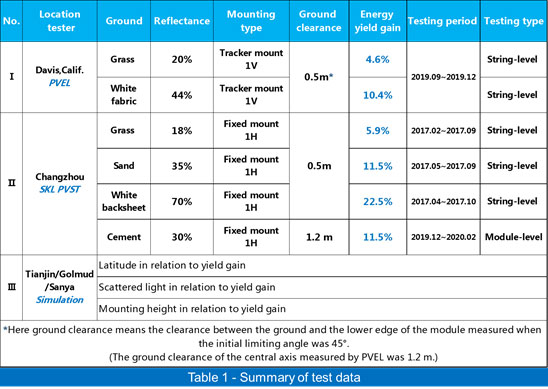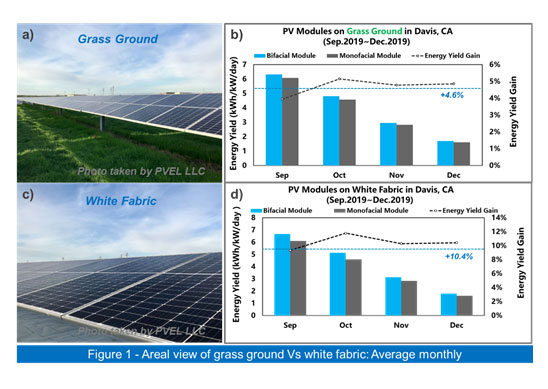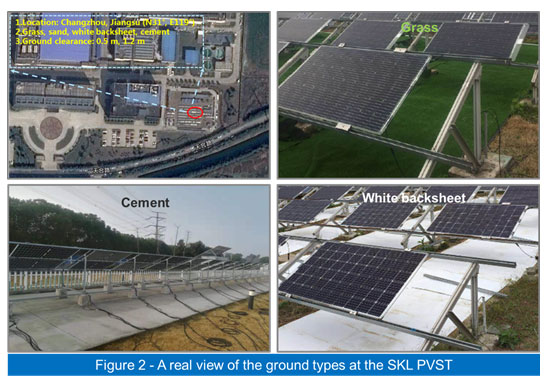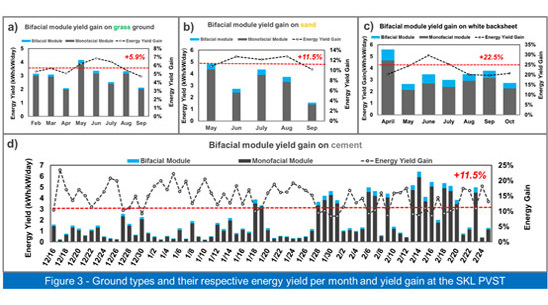Duomax Twin: The value-added bifacial double-glass modules, with outstanding results of energy yield gain
- 20/04/27
- Business of Solar,Panel Talk and Technology
As the first Chinese developer and supplier of bifacial double-glass modules, Trina Solar has devoted itself to energy yield empirical testing and market promotion of its Duomax Twin bifacial double-glass module since 2017. With high reliability and high energy yield performance, the product has been proven to be prominently effective in driving down system energy cost as the empirical data provided by multiple third parties have confirmed its energy yield gain.
Based on the application data from the State Key Laboratory (SKL) of PV Science and Technology (PVST) and from 100+ countries and districts, Trina Solar involves itself energetically in research on bifacial module yield gain while collaborating in depth with PV Evolution Labs (PVEL), an authoritative third-party certifying agent. What’s more, as a total solution provider, Trina Solar has built up much theoretical knowledge through research on simulation modeling, which is of great significance to lead the development of entire industry.
This article centers around Duomax Twin bifacial double-glass modules in respect of the empirical data provided by PVEL and SKL PVST to explore energy yield gain in various environments. Simulation modeling is also included as part of the content.
Projects of Empirical Testing
The following table summarizes the project specific test data:

I. PVEL Empirical Case in Calif., U.S.
The case involved one of PVEL’s test farms located in Davis, Calif., U.S. Known for a typical Mediterranean climate, California has an excellent promise for bifacial module application due to a warm and humid winter, a dry and scorching summer, abundance solar resources and flat terrain.

As shown in Figure 1, the module was mounted on a horizontal single axis tracker with a ground clearance of 0.5 m. The measured reflectance of grass ground and white fabric was 20% and around 44% respectively. (Note: The local solar farms extensively adopted white fabric which has a reflectance of 40%, approximating to the reflectance of sand, while the reflectance of simulated traditional snow ground was around 80-90%). As revealed by the measured energy yield data covering September through December 2019, the Duomax Twin proved to have a 4.6% yield gain on grass ground and a 10.4% yield gain on white fabric. The substantial figures, representing the strengths of the Duomax Twin, were released by PVEL, an authoritative third-party global certifying agent and new figures will continue to be collected and updated on a quarterly basis.
II. Empirical Case in Changzhou, Jiangsu, China
Changzhou testing farm, located on the east of SKL PVST, is provided for four ground testing projects, i.e. grass ground, sand, white backsheet and cement, which all adopt identical fixed mounts. As shown in Figure 2, the testing of grass ground, sand and white backsheet started from 2017 onwards and the mounting height was 0.5 m.

As shown in Figure 3, while grass had a measured reflectance of merely 18%, the resulting yield gain still averaged 5.9% and could achieve as high a gain as 6.9% in summer. In the case of sand with a reflectance of 35%, the bifacial module could achieve as high a yield gain as 11.5%. In the case of highly-reflective white backsheet, the bifacial module could achieve as high a yield gain as 22.5%.

As for cement, the mounting height was 1.2 m in order to explore the effect of different mounting heights. Testing began from the end of 2019 and it was found that the bifacial module contributed to an average yield gain of 11.5% in a three-month period from December 16, 2019 to February 25, 2020.
The above ground applications returned empirically that the bifacial module has realized considerable gains as always and that the energy yield advantage of Duomax Twin reduced energy cost for the farms to a very significant degree.
III. Simulation Modeling: Tianjin vs Golmud vs Sanya
The above empirical data collected by two research institutes pointed to the fact that the increase in ground reflectance resulted in an even more prominent energy yield gain of the bifacial module. Furthermore, yield gain is closely correlated with farm latitude, scattered light, mounting height and seasonal radiation variation. Based on the correlation, the Trina Solar R&D team picked three representative cities, i.e. Tianjin, Golmud and Sanya in China for a system simulation study which returned a conclusion of some value to industry practice.
Factor 1: Latitude and Scattered Light
From the perspective of latitude, higher latitude contributes to greater yield gain. As shown in Figure 4, although Tianjin was similar to Sanya in respect of scattered light, the comparatively great disparity resulted in the former having a yield gain prominently higher than the latter. Considering the universal design of large tilt angle and array spacing, it is strongly recommended that high-reflectance ground materials be used to obtain greater yield gain.

From the perspective of scattered light, more scattered light contributes to higher yield gain. While Tianjin and Golmud are located on the same latitude line, the former was proved by simulation to have a yield gain higher than the latter, as indicated in Figure 4, and the disparity became all the more prominent with the increase in ground reflectance. Therefore, use of higher-ground reflectance materials in proper quantities can contribute to greater additional gain in the case of more scattered light.
Factor 2: Ground Clearance

Energy yield is closely correlated with mounting height, too. If the module is mounted higher above the ground, solar radiation will become evener on both faces and therefore result in higher energy yield. The Trina Solar R&D team conducted a simulation for the ground clearance of the tracker used in PVEL’s white fabric research. As shown in Figure 5, the 1.3 m gap between a 2.5 m central axis and a 1.2 m central axis brought about a 3% gap in energy yield. Therefore, it is strongly recommended that if the conditions allow, a greater mounting height is preferred in order to generate a favorable economic return.
Conclusion
1. Empirical Study: The empirical data returned by both solar farms have established the dramatic advantage of Trina Solar Duomax Twin bifacial double-glass module which is fit for multiple terrain and mounting applications.
2. Simulation Study: The Trina Solar R&D team utilized the resources of the SKL PVST to investigate how farm latitude, scattered light and mounting height affected bifacial modules in respect of energy yield gain while giving valuable advice to industry practice.
3. Warranty Policy: SKL PVST has included the bifaciality factor and backsheet power rating of bifacial modules. Also, discussion has been introduced to include bifacial energy yield in the warranty for the use of a marketing strategy for the Duomax Twin
4. Total Solution: Besides, the TrinaPro solution, which integrates a smart tracker and inverter, further improves system efficiency and reduces the LCoE. As a total solution combining bifacial modules with a smart tracker system, TrinaPro is committed to bringing higher ROI to its global customers.

About PV Evolution Labs
PV Evolution Labs (PVEL) is the leading reliability and performance testing lab for downstream solar project developers, financiers, and asset owners and operators around the world. With nearly ten years of experience and accumulated data, PVEL conducts testing that demonstrates solar technology bankability. Its trusted, independent reports replace assumptions about solar equipment performance with data-driven, quantifiable metrics that enable efficient solar project development and financing.
The PVEL network connects all major PV and storage manufacturers with 300+ global Downstream Partners representing 30+ gigawatts of annual buying power. PVEL’s mission is to support the worldwide PV downstream buyer community by generating data that accelerates adoption of solar technology. Learn more online at pvel.com.
About State Key Laboratory of PV Science and Technology
The Trina Solar State Key Laboratory of PV Science and Technology is one of the first state key laboratories accredited by the Chinese Ministry of Science and Technology. Trina Solar has established a technology innovation team made up of top researchers and experts from across China and around the world. Working together with leading R&D centers, certification authorities and testing organizations, the company plays a leading role in setting international standards for the industry. The State Key Laboratory of PV Science and Technology has set 20 world records in PV cell efficiency and module output and holds the highest number of patents in the PV industry.
Relevant Topics
Smart Energy Solutions
delivered straight to your inbox


